-
Promotion

Caution Fork Lift Trucks Floor Sign
From £30.99 To £40.99
From £21.99 To £36.91
Supplied in: Single -
Promotion

Electricity Symbol On White Sign
From £2.12 To £11.99
From £1.85 To £7.79
Supplied in: Single -
Promotion

Danger Explosive Atmosphere (Ex Symbol) Signs
From £3.99 To £74.99
From £3.87 To £43.06
Supplied in: Single -
Promotion

Ice Warning Sign
From £45.99 To £55.99
From £36.44 To £44.54
Supplied in: Single -
Promotion
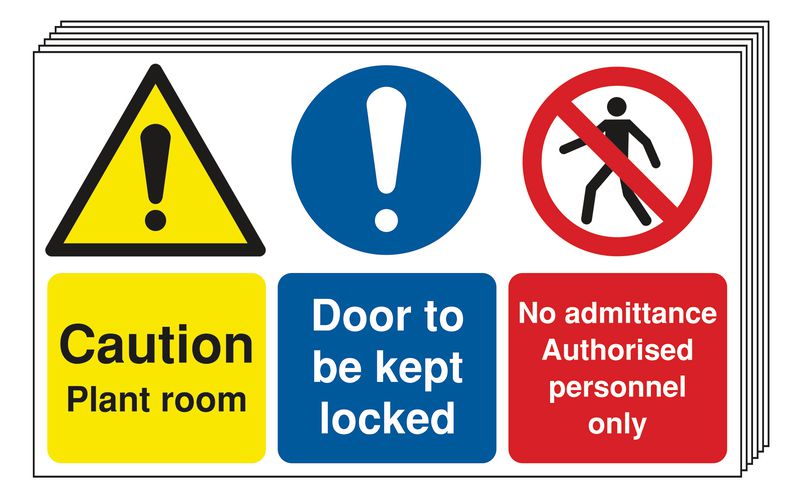
6-Pack Caution Plant Room Door To Be Kept Locked Signs
From £104.99 To £140.99
From £88.65 To £121.50
Supplied in: Pack of 6 -
Promotion
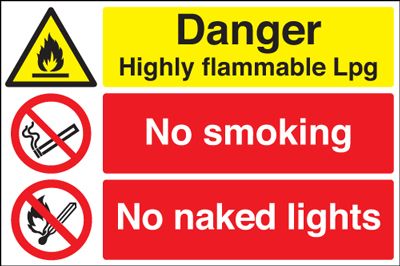
Danger Flammable LPG/No Smoking Multi-Message Signs
From £6.99 To £58.99
From £5.84 To £51.08
Supplied in: Single -
Promotion

6-Pack 24 Hour CCTV In Operation Signs
£77.99
£66.83
Supplied in: Pack of 6 -
Promotion

24 Hour CCTV In Operation Write On Signs
From £6.99 To £49.99
From £5.84 To £43.19
Supplied in: Single -
Promotion

Danger High Voltage/No Admittance Multi-Message Sign
From £8.99 To £33.99
From £7.19 To £29.25
Supplied in: Single -
Promotion

24 Hour CCTV In Operation Signs
From £9.99 To £50.99
From £8.55 To £44.06
Supplied in: Single -
Promotion

Warning Fork Lift Trucks Stanchion Sign
£80.99
£43.34
Supplied in: Single -
Promotion

Caution Men At Work Stanchion Sign
£80.99
£43.34
Supplied in: Single -
Promotion
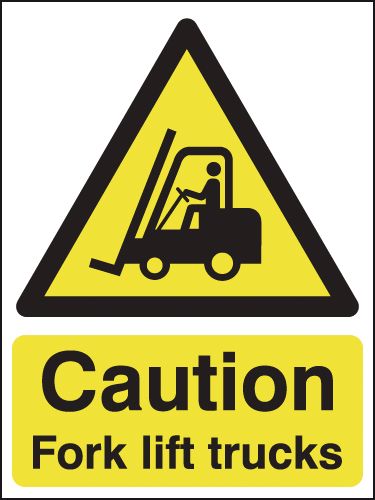
Caution Fork Lift Truck Sign
From £3.99 To £63.99
From £3.87 To £55.92
Supplied in: Single -
Promotion
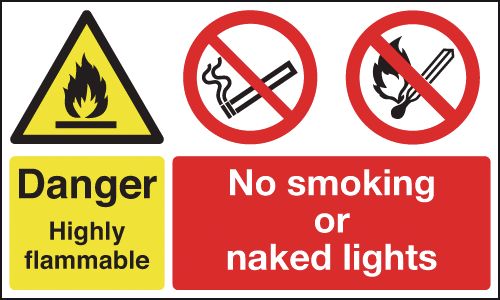
Danger Highly Flammable/No Smoking/Naked Lights Signs
From £3.99 To £50.99
From £3.60 To £44.06
Supplied in: Single -
Promotion
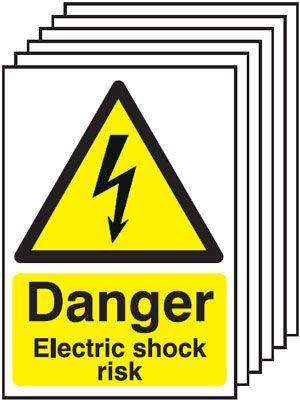
6-Pack Danger Electric Shock Risk Signs
From £31.99 To £155.99
From £26.57 To £133.71
Supplied in: Pack of 6 -
Promotion

Caution Plant Room/Door Kept Locked Multi-Message Signs
From £20.99 To £33.99
From £17.99 To £29.25
Supplied in: Single -
Promotion

Flammable/No Smoking/No Naked Light Multi Message Sign
From £20.99 To £50.99
From £17.99 To £44.06
Supplied in: Single -
Promotion
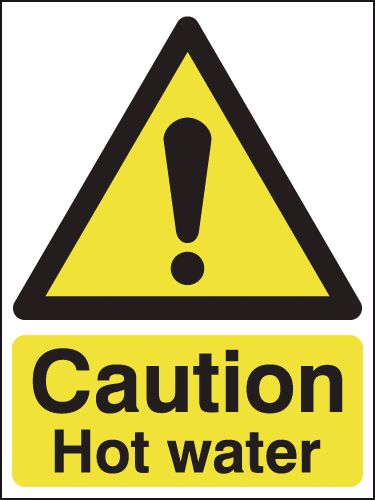
Caution Hot Water Signs
From £3.99 To £29.90
From £3.87 To £23.06
Supplied in: Single -
Promotion
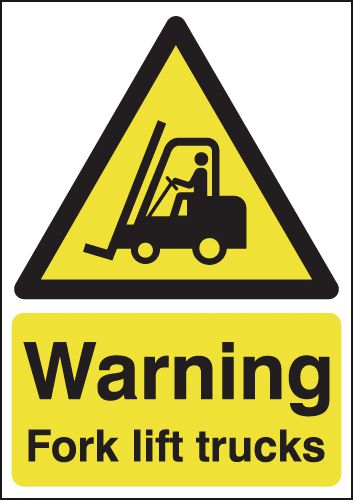
Warning Fork Lift Trucks Signs
From £5.99 To £84.99
From £4.62 To £82.34
Supplied in: Single -
Promotion

Danger Confined Space & Entry By Permit Only
From £6.99 To £84.99
From £5.84 To £73.35
Supplied in: Single -
Promotion

6-Pack Caution Fork Lift Trucks Signs
From £62.99 To £130.99
From £49.61 To £121.58
Supplied in: Pack of 6 -
Promotion
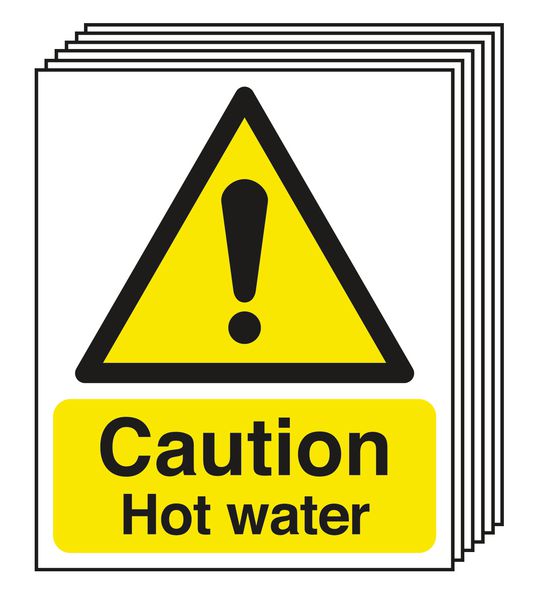
6-Pack Caution Hot Water Signs
From £20.40 To £155.99
From £20.40 To £146.78
Supplied in: Pack of 6 -
Promotion

Caution Chemical Store Guidance Safety Signs
From £11.99 To £28.99
From £8.33 To £23.06
Supplied in: Single -
Promotion

6-Pack Caution Mind Your Head Signs
£49.99
£40.28
Supplied in: Pack of 6 -
Promotion

6-Pack Mind The Step Signs
£41.99
£23.94
Supplied in: Pack of 6 -

4-Pack Anti-Slip Floor Signs - Caution Fork Lift Trucks Operating In This Area
£108.12Supplied in: Pack of 4 -
Promotion

Overhead Sign
£8.50
£4.54
Supplied in: Single -
Promotion

Caution Door Is Alarmed/Keep Clear Multi-Message Signs
From £10.99 To £19.99
From £9.45 To £17.09
Supplied in: Single -
Promotion

6-Pack Caution Hot Surface Signs
£26.99
£24.36
Supplied in: Pack of 6 -
Promotion

6-Pack Caution Pedestrians/Sound Horn/5mph Multi-Signs
From £104.99 To £167.99
From £88.65 To £144.90
Supplied in: Pack of 6 -
Promotion
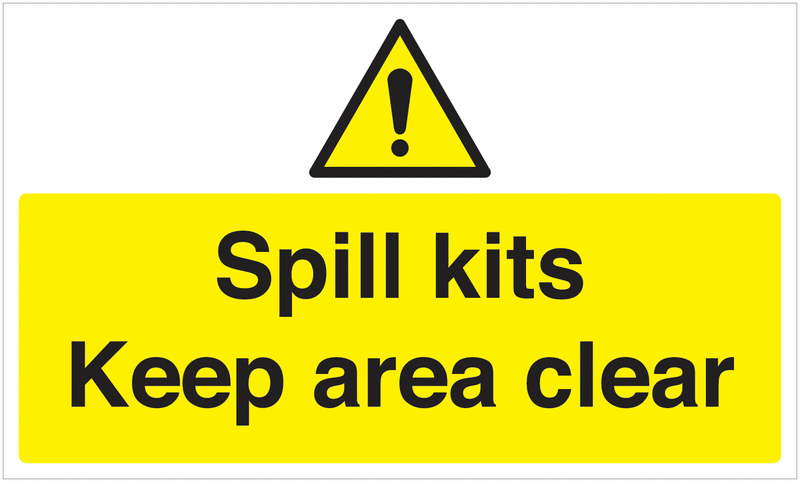
Spill Kits Keep Area Clear Anti-Slip Floor Sign
£44.99
£16.64
Supplied in: Single -
Promotion

Forklift Truck Charging Area Keep Area Clear Floor Sign
£44.99
£16.64
Supplied in: Single -
Promotion

Danger Asbestos Signs
From £2.99 To £31.99
From £2.52 To £24.90
Supplied in: Single -
Promotion

Caution Mind Your Head ISO 7010 Hazard Signs - Single
From £3.99 To £53.99
From £3.87 To £38.43
Supplied in: Single -
Promotion

Warning Contains Asbestos Signs
From £2.02 To £11.99
From £2.02 To £8.40
Supplied in: Single -
Promotion

CCTV In Operation White/Yellow High Gloss Single Signs
From £2.99 To £93.99
From £2.03 To £81.68
Supplied in: Single -
Promotion

GHS COSHH Symbol Signs - Flammable
From £10.99 To £17.99
From £9.00 To £15.75
Supplied in: Single -
Promotion
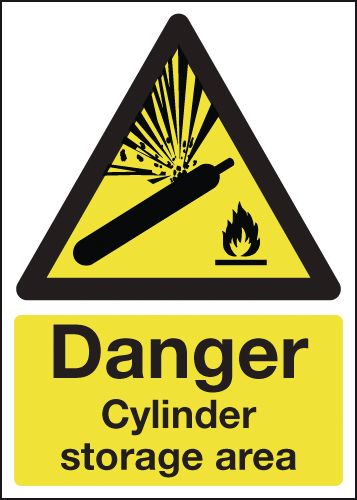
Danger Cylinder Storage Area Sign
From £6.99 To £34.99
From £5.04 To £27.50
Supplied in: Single -
Promotion

6-Pack CCTV In Operation Signs
From £31.99 To £155.99
From £26.55 To £134.10
Supplied in: Pack of 6 -
Promotion

6-Pack Caution Fragile Roof Signs
From £31.99 To £155.99
From £26.57 To £133.71
Supplied in: Pack of 6 -
Promotion
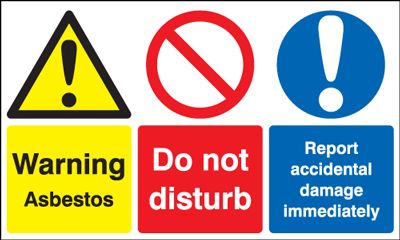
Warning Asbestos/Do Not Disturb... Multi-Message Signs
From £3.99 To £33.20
From £3.59 To £29.25
Supplied in: Single -
Promotion
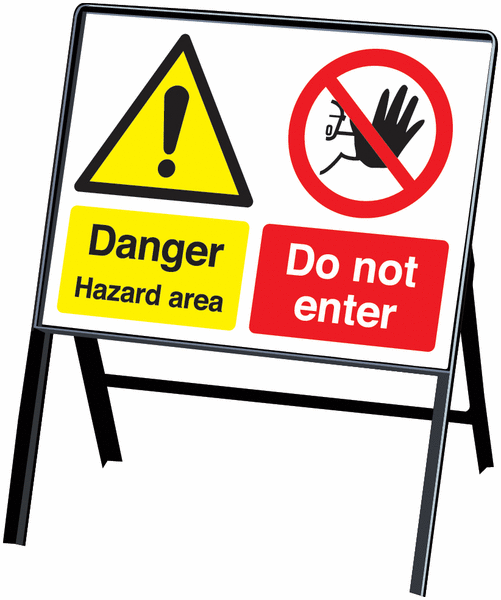
Danger Hazard Area Do Not Enter Stanchion Sign
£80.99
£68.85
Supplied in: Single -
Promotion

Danger Explosive Atmosphere - Atex Category 2 Signs
From £3.99 To £18.99
From £3.87 To £15.28
Supplied in: Single -
Promotion

GHS COSHH Magnetic Signs Dangerous for the Environment
From £10.99 To £17.99
From £9.00 To £15.75
Supplied in: Single -
Promotion

GHS COSHH Symbol Signs - Harmful/Irritant
From £10.99 To £17.99
From £9.00 To £15.75
Supplied in: Single -
Promotion

Caution Pedestrians Signs
From £5.99 To £59.99
From £4.62 To £36.67
Supplied in: Single -
Promotion

Warning Flammable Liquid Signs
From £9.99 To £31.99
From £8.40 To £25.36
Supplied in: Single -
Promotion

Battery Charging Area/Explosive Gases... Signs
From £20.99 To £58.99
From £17.99 To £51.08
Supplied in: Single -
Promotion

Danger/No Admittance/Visitors Report To Reception Sign
From £20.99 To £58.99
From £17.99 To £51.08
Supplied in: Single -
Promotion
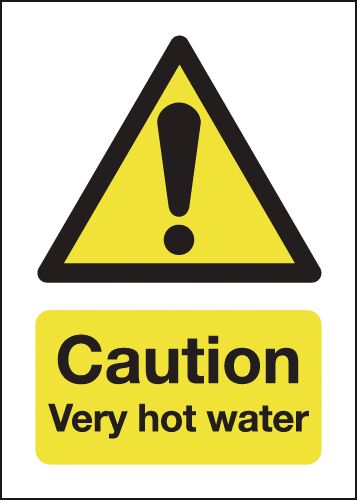
Caution Very Hot Water Signs
From £2.02 To £4.99
From £2.02 To £3.67
Supplied in: Single -
Promotion

Anti-Slip Floor Signs - Caution Electric Vehicles
From £30.99 To £53.99
From £16.64 To £40.84
Supplied in: Single -
Promotion

Caution Trip Hazard Signs
From £5.99 To £50.99
From £4.62 To £46.19
Supplied in: Single -
Promotion

Caution Sound Horn/5mph Multi-Message Signs
From £20.99 To £33.99
From £17.99 To £29.25
Supplied in: Single -
Promotion

Forklift Truck Parking Area Keep Clear Floor Sign
£44.99
£16.64
Supplied in: Single -
Promotion

24 Hour CCTV In Operation Write On Window Signs
From £10.99 To £17.99
From £9.86 To £16.86
Supplied in: Single -
Promotion
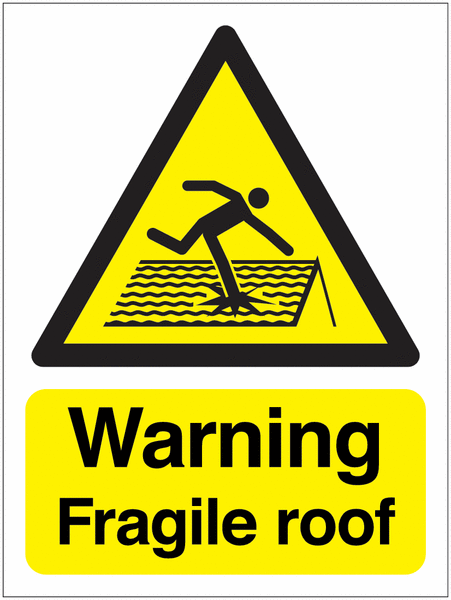
Warning Fragile Roof Sign
From £5.99 To £47.99
From £4.62 To £33.34
Supplied in: Single -
Promotion

Danger Hazardous Substances/See Data Sheets Signs
From £20.99 To £33.99
From £17.99 To £29.25
Supplied in: Single -
Promotion

Caution Chemical Store Signs
From £3.99 To £34.99
From £2.77 To £25.36
Supplied in: Single -
Promotion

Warning Corrosive Signs
From £3.99 To £31.99
From £3.87 To £25.36
Supplied in: Single -
Promotion

Danger Sign for High Voltage
From £2.99 To £34.99
From £2.02 To £30.31
Supplied in: Single -
Promotion

Caution Hot Surface Signs
From £5.99 To £31.99
From £4.62 To £25.36
Supplied in: Single -
Promotion

Compressed Oxygen Signs
From £6.99 To £31.99
From £5.04 To £25.36
Supplied in: Single -
Promotion

Highly Flammable LPG/No Smoking Or Naked Lights Signs
From £20.99 To £50.99
From £17.99 To £44.06
Supplied in: Single -
Promotion

Danger Lift Machinery/Access Forbidden Signs
From £8.99 To £33.99
From £7.19 To £29.25
Supplied in: Single -
Promotion

Caution Electric Vehicles Are Operating In Area Signs
From £16.99 To £50.99
From £13.95 To £35.75
Supplied in: Single -
Promotion
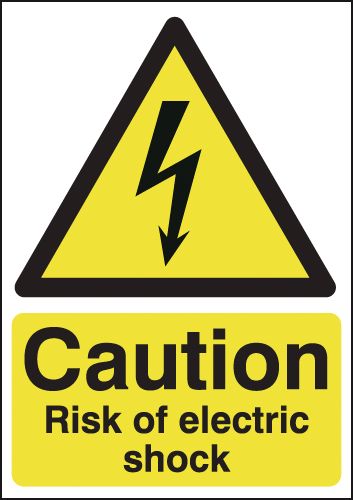
Caution Risk Of Electric Shock Sign
From £2.99 To £31.99
From £2.02 To £25.36
Supplied in: Single -
Promotion

Danger Hazard Area/Do Not Enter Multi-Message Signs
From £20.99 To £44.99
From £17.99 To £38.48
Supplied in: Single -
Promotion

Caution Fork Lifts Operating Stick to Walkways Floor Sign
£20.99
£17.99
Supplied in: Single -
Promotion
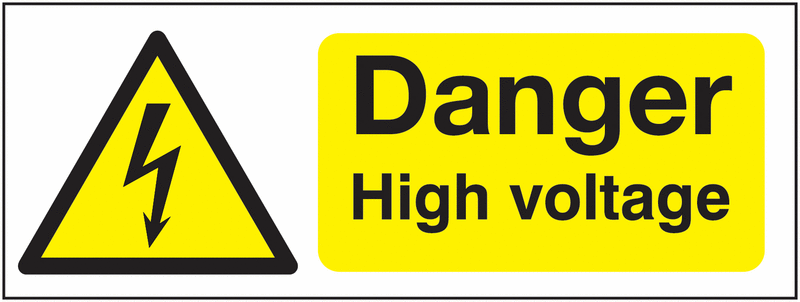
Danger High Voltage Window Fix Safety Signs
From £10.99 To £16.99
From £5.13 To £15.48
Supplied in: Single -
Promotion

Danger Electric Shock Risk Sign
From £2.99 To £50.99
From £2.18 To £47.32
Supplied in: Single -
Promotion

Mind The Step Signs
From £8.99 To £14.99
From £4.54 To £8.25
Supplied in: Single -
Promotion

GHS COSHH Symbol Magnetic Portrait Signs Corrosive
From £10.99 To £17.99
From £9.00 To £15.75
Supplied in: Single -
Promotion
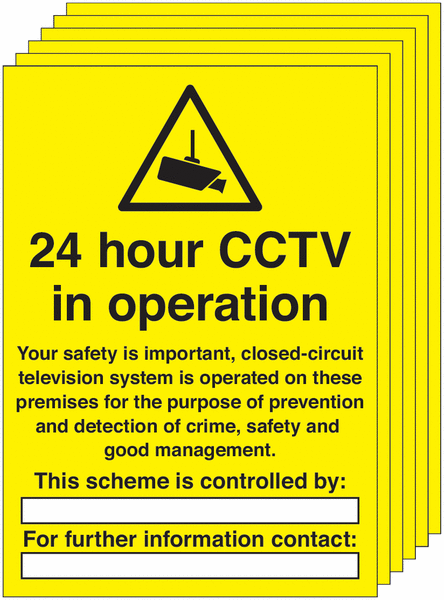
6-Pack 24 Hour CCTV In Operation Write On Signs
From £31.99 To £233.99
From £26.55 To £200.48
Supplied in: Pack of 6 -
Promotion

Warning Men Working Overhead Stanchion Sign
£80.99
£43.34
Supplied in: Single -
Promotion
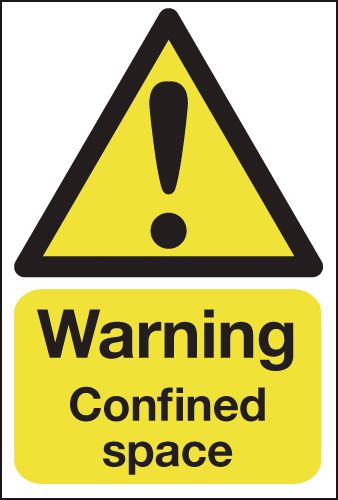
Warning Confined Space Signs
From £5.99 To £31.99
From £4.03 To £25.36
Supplied in: Single -
Promotion

6-Pack Danger Deep Water Signs
£77.99
£73.24
Supplied in: Pack of 6 -
Promotion

6-Pack Warning Fork Lift Trucks Signs
£130.99
£121.58
Supplied in: Pack of 6 -
Promotion

Caution Slippery Surface Stanchion Sign
£80.99
£43.34
Supplied in: Single -
Promotion
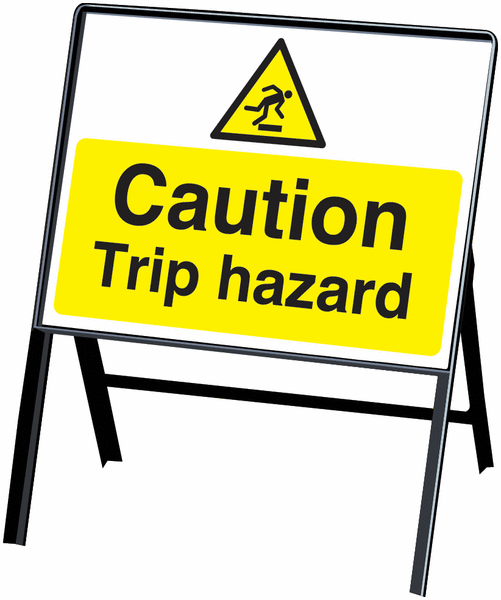
Caution Trip Hazard Stanchion Sign
£80.99
£43.34
Supplied in: Single -
Promotion

Danger Slippery Surface Signs
From £6.99 To £50.99
From £5.04 To £34.38
Supplied in: Single -
Promotion

Construction Signs - Danger Deep Water
From £16.99 To £69.99
From £13.70 To £41.67
Supplied in: Single -
Promotion

Construction Signs - Danger Men Working Overhead
From £11.32 To £69.99
From £11.32 To £41.67
Supplied in: Single -
Promotion

Caution Hot Sign
From £1.99 To £11.99
From £1.85 To £8.40
Supplied in: Single -
Promotion
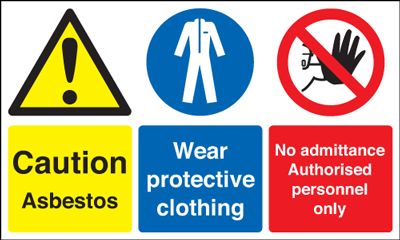
Caution Asbestos/Protective Clothing Signs
From £20.99 To £43.99
From £17.99 To £38.03
Supplied in: Single -
Promotion

Hazardous Area/No Admittance Multi-Message Signs
From £15.99 To £33.99
From £13.49 To £29.25
Supplied in: Single -
Promotion
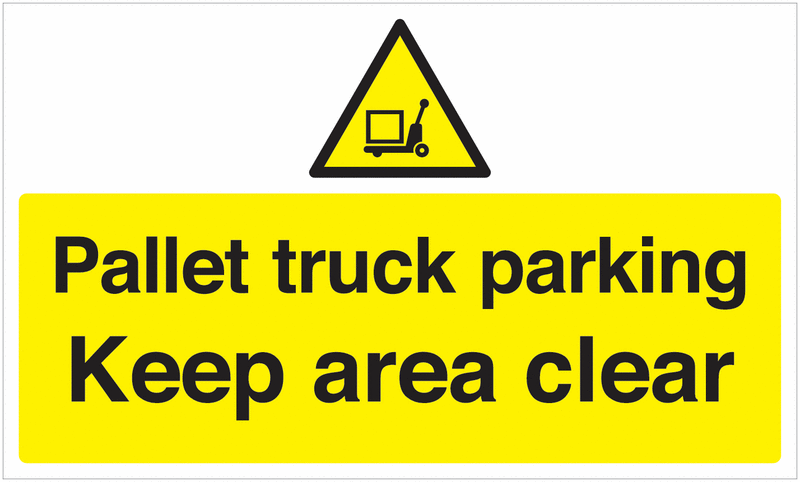
Pallet Truck Parking Keep Clear Anti-Slip Floor Sign
£44.99
£34.88
Supplied in: Single -
Promotion

Warning Open Pit Stanchion PVC Hazard Signs - Single
£80.99
£43.34
Supplied in: Single -
Promotion

CCTV In Operation Outdoor Aluminium Signs
From £59.99 To £129.99
From £51.53 To £114.30
Supplied in: Single -
Promotion

Danger Of Death Signs
From £5.99 To £50.99
From £4.62 To £46.19
Supplied in: Single -
Promotion

Danger Automatic Machinery May Start Signs
From £9.99 To £50.99
From £8.40 To £34.38
Supplied in: Single -
Promotion

Caution May Contain Asbestos Signs
From £2.02 To £11.99
From £2.02 To £8.40
Supplied in: Single -
Promotion

6-Pack Caution Wet Floor Signs
From £31.99 To £155.99
From £26.57 To £133.71
Supplied in: Pack of 6
Hazard Signs
Huge Range of High Quality Hazard Signs with Quick Delivery
No matter what industry you work in, there are hazards in the workplace. With this in mind Seton’s range of UK hazard signage is essential for warning of hazards and dangers in the workplace. From flammable and electric shock risk signs to wet floor, anti climb and CCTV signs, Seton has you covered.
Including a full range of COSHH signs, our selection is perfect if you need hazard signs in the laboratory, on construction sites; even transporting hazardous substances, driving lorries. Featuring international hazard signs, our range is fully HSE compliant. Shop the range now!

Expert Information
Also discover:
Safety signsMandatory SignsProhibition SignsBraille safety signsRecycling SignsElectrical SignsHarmful Substances SignsFlammable signsTrip hazard signCaution SignsChemical signsWarning signsPedestrian warning signsTemperature Warning SignsHazardous Area SignsCctv signsForklift Warning Signs
Hazard Signs in the Workplace: Buying Guide
Making the Workplace Safer with Hazard Signs
Keeping workers and visitors to your premises informed of any hazards that they might encounter is an essential part of your health and safety responsibility. The adequate signposting of potential hazards is a legal requirement in most premises that are accessed by employees and members of the public, so placing UK Hazard Signs on you premises is an important part of ensuring that you comply with relevant health and safety legislation.UK hazard signs can be permanent and static or portable, allowing them to be placed wherever they are needed to warn of temporary hazards in any given area.
Hazard signs are markers that are used to draw attention to potentially dangerous situations within a public access premises or workplace. UK hazard signs are instantly recognisable and usually incorporate designs that have become synonymous with danger in most cultures, such as biohazard signs, therefore instantly alerting those seeing them to a potential danger or hazard.
Pictogram hazard signs use universally recognisable images to give a non-verbal communication of potential dangers for those who are unable to read or comprehend verbal signage. Most UK hazard signs incorporate powerful verbal information as well with commonly featured words including ‘caution’, ‘warning’ and ‘danger’ as is included in most of our gas and explosive signs, these grab the attention of those viewing them and instantly communicate the existence of risk.
Some UK hazard signs are static and remain in one place, e.g. warning signs alerting people to the existence of physical features that could pose a risk, such as a trips and slips, while others are moveable allowing them to be placed to warn of temporary hazards, we have a full range of floor stands that include signs that warn of wet floors after spills or cleaning, trip hazards and even access prohibition signage which can be removed once the floor has dried and the hazard is removed.
Diverse Placement Options
The Health and Safety (Safety Signs and Signals) Regulations 1996 cover UK hazard signs. Employers should familiarise themselves with these rules to ensure that they stay up to date with the latest legal requirements. The Health and Safety Executive (HSE) also recommends looking at other relevant regulations, such as those specific to chemical production and transport, when performing risk assessments to gauge and comply with all of the UK hazard sign specifications.It can be helpful to do a room-by-room tour of your premises to identify any potential hazards before planning your signage, and if in doubt, consult the HSE about your signage responsibilities. The workplace health and safety regulator suggests:
- Using UK hazard signs that are compliant with the Control of Substances Hazardous to Health (COSHH) Regulations 2002 and ISO 7010 for universal recognisability.
- Matching the correct UK hazard signs with the relevant dangers in zones or areas.
- Ensuring that UK hazard signs are highly visible by keeping them clean and replacing faded or broken ones.
- Using durable materials for UK hazard signs in heavy-duty environments, such as UV- and impact-resistant hazard signs.
- Strategically placing UK hazard signs where all employees and visitors to a site can see them. Remember that the eye level of short and tall people differ.
- Regularly reviewing risk management practices and the need for additional UK hazard signs as a business expands.
We supply a complete range of sign fixings for UK hazard signs. These will ensure that you can affix any sign to any surface and you can rest assured that they will remain wherever they are displayed for a long period of time.
Seton also stocks a number of portable UK hazard signs, which can be placed in any given area to warn of a temporary hazard. These portable signs are straightforward to put up and take down, and they can be stored easily when they’re not being used. The rigid foam construction of these hazard signs is tough yet lightweight, which means that they are easy to handle.
Understanding Hazard Signs and Their Meanings
Staying compliant and keeping staff and visitors safe on site will always be a priority for any business. With the wide range of hazards that are present it is important to have the appropriate hazard sign to create awareness of the potential danger. Having a symbol which immediately indicates the hazard is important for clarity and speed of understanding.Types of Hazard Signs
We offer a huge range of UK hazard signs, helping employers safely signpost any areas of their premises where workers or members of the visiting public may potentially be placed at risk.Our hazard sign range warns of static physical hazards using items such as step signs, drop signs, mind your head signs for low doorways and ceilings, slippery surface signs, barbed wire signs, deep water signs and anti-climb paint signs.
We also supply danger signs that alert people to potentially-dangerous practices in an area they are entering, such as fork lift truck signs, vehicle warning signs, signs that warn of plant machinery in operation, arc welding signs and men at work signs.
Seton’s UK hazard signs also cover harmful substance warnings, including signs to warn of chemical hazards, explosives and explosive atmospheres, radiation hazards and biological hazards. There are also a wide range of electrical signs, such as those which indicate live wiring and voltages.
What Colour are Hazard Signs?
The Health and Safety (Safety Signs and Signals) Regulations 1996 state that a workplace must keep hazard safety signs on display and should properly maintain them. This regulation applies to any possible risks that a business cannot remove or manage in a different way. Accidents can happen in seconds, so to ensure that a person can quickly identify the type of warning being made, hazard signs are differentiated by colour. It is your responsibility as an employer to confirm that everyone on your team understands hazard signs and meanings, even if the message displayed seems obvious.- Signs in yellow or amber. These are warning signs that indicate that it is important to take care in this area. Electrical hazard signs and hazard signs for chemicals are often in yellow.
- Signs in red. Prohibitory signs draw attention to a nearby hazard or a potential one. Some signs, such as our No Entry sign, include a pictogram to reinforce the message and reduce the risk of accidents.
- Signs in green. A green sign highlights the location of fire exits, water stations or evacuation routes. These are essential in a busy workplace because staff need quick access to safe areas in the event of an accident or an emergency.
- Signs in blue. Referred to as mandatory signs, blue signs describe an action that must be completed before entering. This could include hazard signs for chemistry labs, such as putting on a white coat or eye protection.
For help with displaying the correct hazard safety signs, Seton has a range of solutions to keep your business compliant with the current regulations.
What Shape are Hazard Signs?
Whether you are searching for the hazard signs road users may need or hazard signs for chemicals, you need to choose the right-shaped ones for each work location in your facility. You could also consider making replacements because staff can sometimes ignore older hazard signs and the meaning behind them if they see them every day.- Circles. These signs indicate that an action is recommended or essential. Most signs show which action needs to take place by using a pictogram.
- Circles with a 45° slash. These types of circular signs indicate that an area or action is forbidden. These are crucial signs because they ensure staff are always aware of hazards.
- Triangles. Triangles provide cautions regarding certain hazards and possible hazards. They ensure that your staff avoid electric shocks or exposure to toxins.
- Squares and rectangles. These signs present general information and directions that may be needed in an emergency, including fire exits and first aid stations.
Do Hazard Signs Work?
Appropriate UK hazard signs and meanings that can be clearly identified help visitors to your business and members of your staff to take the necessary precautions. They indicate that a hazard cannot be avoided but also suggest what action people can take to protect themselves. According to the Labour Force Survey covering 2017/18, 555,000 injuries were sustained in the workplace over the course of one year, many of which resulted in lost working days. To better manage the potential risks in your business, you need to remain vigilant.As your workplace grows and develops, there may be significant changes in procedures or the equipment used. These lead to new safety risks that you are obliged to review through a risk assessment. According to the HSE, it should involve a “consideration of what in your business might cause harm, and how, and the people who might be affected.” As part of your review, you may discover new dangers, but you can manage these in part with new signs.
There is a lot to consider, but Seton can support you in keeping your workplace safe and up to date with hazard signs and symbols for all types of facilities.






